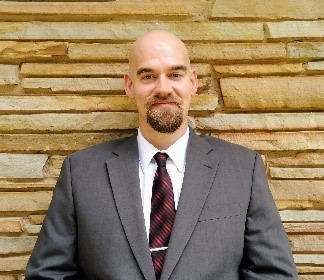We are proud to share this guest post by Paul Phillips, Math Interventionist at Great Hearts Live Oak, about his journey towards a career in education and his perspective as a teacher at Great Hearts Live Oak, a public charter school with a classical education curriculum.
While charter schools have been operating in Texas for quite some time, it’s only in the last decade or so that they have significantly increased in both numbers and popularity. As traditional independent school districts (ISDs) have generally not been supplanted by these new educational organizations, this has meant that there are more teaching positions open to what was once a relatively closed labor pool. In short, jobs for qualified individuals experienced a great deal of growth at this time. In order to compensate, regulations governing how to obtain a teaching certificate were broadened to accommodate this new need.
Career Change to Education
I bring this up because, about a decade ago, I found myself in an interesting position. I had just completed a graduate-level studies program in a field that I was extremely interested in and passionate about, but did not offer much in the way of career opportunities. At the time, I’d been working for many years toward a goal that, as happens from time to time, didn’t work out. So, having bills to pay, I cast about for a new career track. I recall a somewhat distant relative mentioning how much of a need there was for qualified teachers. As I’d always enjoyed school as a child and had taken a fair amount of emotional satisfaction in my previous job as a non-commissioned officer in the U.S. Army, I decided to try my luck in education.
As this is intended to be a relatively short essay and not my autobiography, I will spare the reader some details of the early (mis)steps in my new career. Suffice it to say that I learned that not all schools exist for the express goal of nurturing young people. Where there’s money to be made, there will always be less-than-entirely scrupulous individuals there to acquire it using various shady methods. While I have always loved learning and take pride in the fact that I have generally done my level best to make the classroom an area for children to grow in and not be imprisoned, I quickly learned that there are many people and organizations in education that very much do not share this perspective.
An Insider’s View of What Makes a High Quality School
Consequently, I have had the opportunity to experience a wide variety of schools and classroom cultures—in other words, schools have occasionally asked me to find employment elsewhere. This is relevant to parents reading this essay because I want to make one thing clear: not all schools are equally beneficial to the children placed in their care. Additionally, it is in every school’s best interest to conceal any deficiencies from prospective customers (i.e., parents) because funding is heavily dependent on student enrollment and retention. When choosing a school to place your child in, I wouldn’t rely heavily upon the smiling face of the school’s principal. Not only is it part of their job to professionally interact with adults, they sometimes have relatively little actual interaction with either the children enrolled in their school or even many of the educators on the payroll. I say this not to denigrate principals; they have a difficult and often thankless job. I merely want to make it clear that schools are complex organizations that can operate differently than many laypeople might imagine.
Instead, parents should observe how the students of a school look and act on a regular basis. Adults spend a great deal of time and effort learning how to deceive others. By their very nature, children are less adept at this. Consequently, if you notice that a school’s student body is unruly, unkempt, or otherwise disorganized, it should be taken as a clue that the school’s culture may not have high standards of discipline or objective achievement. If the parent values these things, additional observations may be warranted. Availability and number of school-related extracurricular activities are often another sign of how involved the school faculty is with the children placed in their care. Regular community outreach activities on behalf of the school is a third indicator of how healthy and positive an environment a given school might be towards your child. I could go on, but my point here is that if where your child is spending much of his or her waking life is important to you as a parent, a thorough and objective investigation of a prospective school is probably time well spent.
Finding Fulfillment as a Great Hearts Live Oak Teacher
Currently, I am privileged to be allowed to teach at the Live Oak campus in the Great Hearts network of charter schools. I use the word privilege here very particularly. Because I have spent a significant amount of time in schools that I would not describe in glowing terms, I believe that I now possess the ability to discern wheat from chaff as far as the quality of an educational institution goes. While Great Hearts Live Oak is not a perfect school (no school is), there is much that happens on a daily basis which reflects well on it despite being founded during the beginning of the awfulness that is our collective Covid life.
If you look up Great Hearts online, one of the first things that you will encounter about it is that there is an intense and abiding focus on linking the school’s curriculum to the objective concepts of Truth, Goodness, and Beauty. While this sounds beneficial, it can be a bit vague. In a world that seems consumed with papering over a negative reality with positive yet empty words, it is right to be somewhat skeptical of this. Still, in my experience, the individuals occupying leadership positions in both the Live Oak campus and the Great Hearts network in general spend a great deal of time and effort making it clear to teachers what those three words mean and how to open their student’s eyes to the joy of learning. For someone like me, who has spent years floundering in the bureaucratic wasteland that state-sponsored education can be, it is a lovely breath of fresh air.
If you happen to visit the Great Hearts Live Oak campus, you will probably notice the manner of dress that the student body is attired in. More specifically, the uniforms that are mandatory for students who wish to attend the school. While many charter schools have some level of uniform requirement, few have the relatively strict rules for acceptable student (and faculty!) dress that Great Hearts insists upon. To some, these expectations are onerous and pointless. To me, however, it represents a desire to instill a level of mindfulness and self-respect that seem uncommon in contemporary educational institutions. When everyone dresses the same, it is much easier for students to focus on learning the required curriculum rather than individual differences in style and taste. Incidentally, this is also why the school discourages conversations revolving around popular culture.
All in all, as someone who believes that children thrive when they are given clear and firm rules to behave appropriately, I am proud to work at Great Hearts Live Oak and look forward to serving in the Great Hearts network for some time to come. I wholeheartedly endorse the Live Oak campus to any prospective parents who wish to improve their child’s educational opportunities and look forward to greeting new, smiling faces in the future.
Charter Moms Chats
Watch Paul Phillips, Math Interventionist at Great Hearts Live Oak, speak with Inga Cotton on Charter Moms Chats on February 22, 2022 at 8:15 AM Central live on Facebook and YouTube.
Paul Phillips is a Math Interventionist at Great Hearts Live Oak. He began his adventures in adulthood by enlisting in the U.S. Army shortly after graduating high school. While in uniform, young Mr. Phillips was stationed overseas in both Japan and Germany. Eventually, after attaining the rank of Staff Sergeant (where he first discovered a talent for inspiring people to success), he decided to rejoin civilian life and completed a bachelor’s program in Political Science at the University of Texas at San Antonio (UTSA). After spending a year abroad in a Mandarin Chinese language immersion course, Mr. Phillips returned to UTSA and finished a master’s program in International Relations.
This will be Mr. Phillips’ 5th year teaching math to young people, and he is very excited to continue doing so at Great Hearts Live Oak. Mr. Phillips is also a big fan of history and may reliably be expected to launch into an overly detailed description of the 6,523 occurrences that led to any particular noteworthy event. Finally, Mr. Phillips is an adherent to the old axiom of “Fit Body, Fit Mind.” Accordingly, he tries to maintain an active lifestyle by hiking, biking and otherwise maintaining a vigorous physical training regimen.
Read More About Classical Education and School Culture
- “What Is Classical Education? Part 2: Education that Nourishes the Mind,” Oscar Ortiz Duarte, San Antonio Charter Moms, February 7, 2022
- “Founders Classical Academy of Schertz School Profile,” San Antonio Charter Moms, January 20, 2022
- “What Is Classical Education? Part I: The First Assumption” Oscar Ortiz Duarte, San Antonio Charter Moms, January 10, 2022
- “Interview with Great Hearts Texas Superintendent Brendan Miniter,” Inga Cotton, San Antonio Charter Moms, December 8, 2021
- “Guide to Enrolling in Great Hearts Academy Texas Schools in San Antonio for 2022–23,” San Antonio Charter Moms, October 26, 2021
- “Introducing Great Hearts Microschools,” Kurtis Indorf, San Antonio Charter Moms, May 11, 2021
- “Great Hearts Online: Classical Education in a Fully Online School,” San Antonio Charter Moms, September 11, 2020


